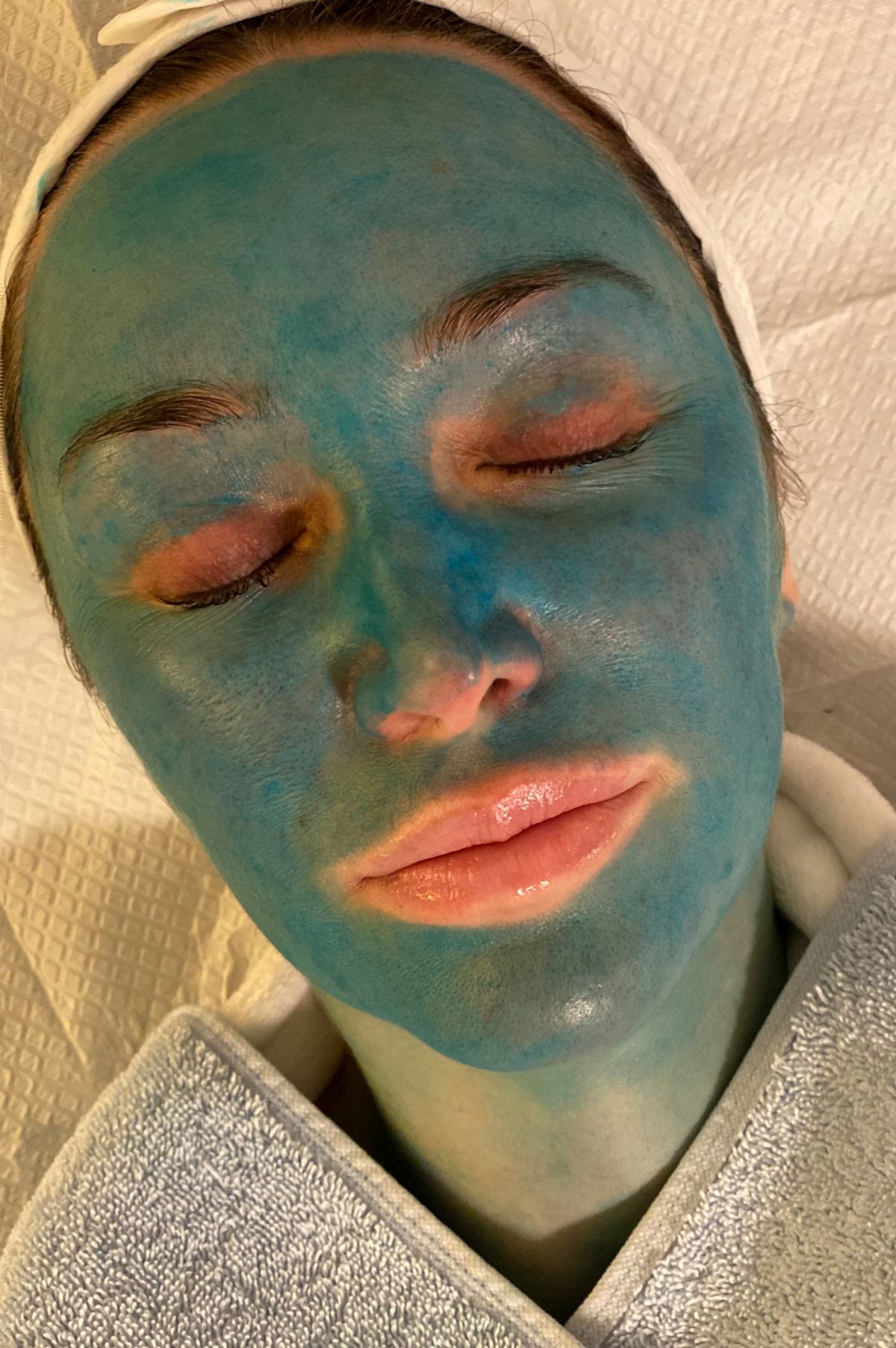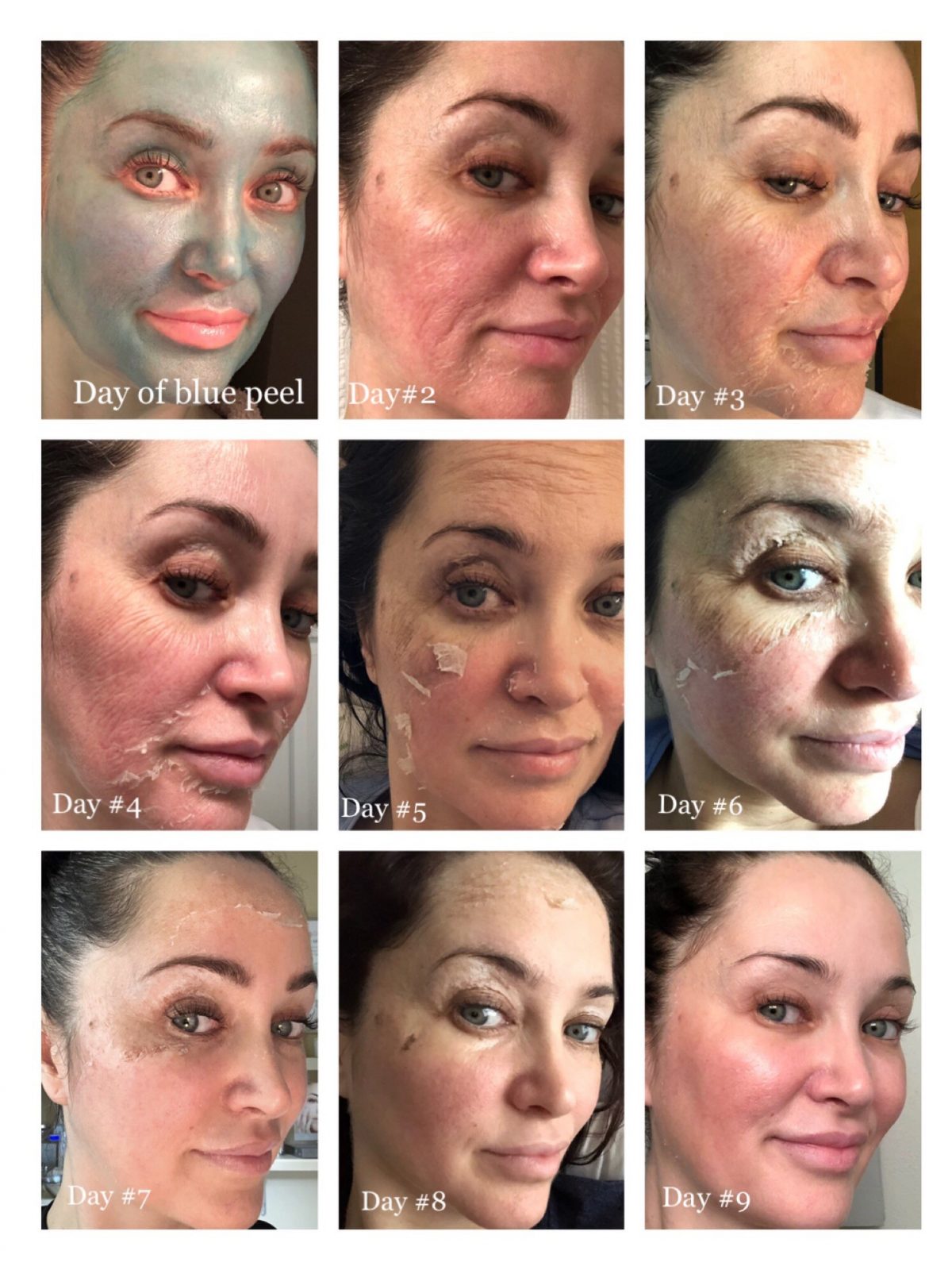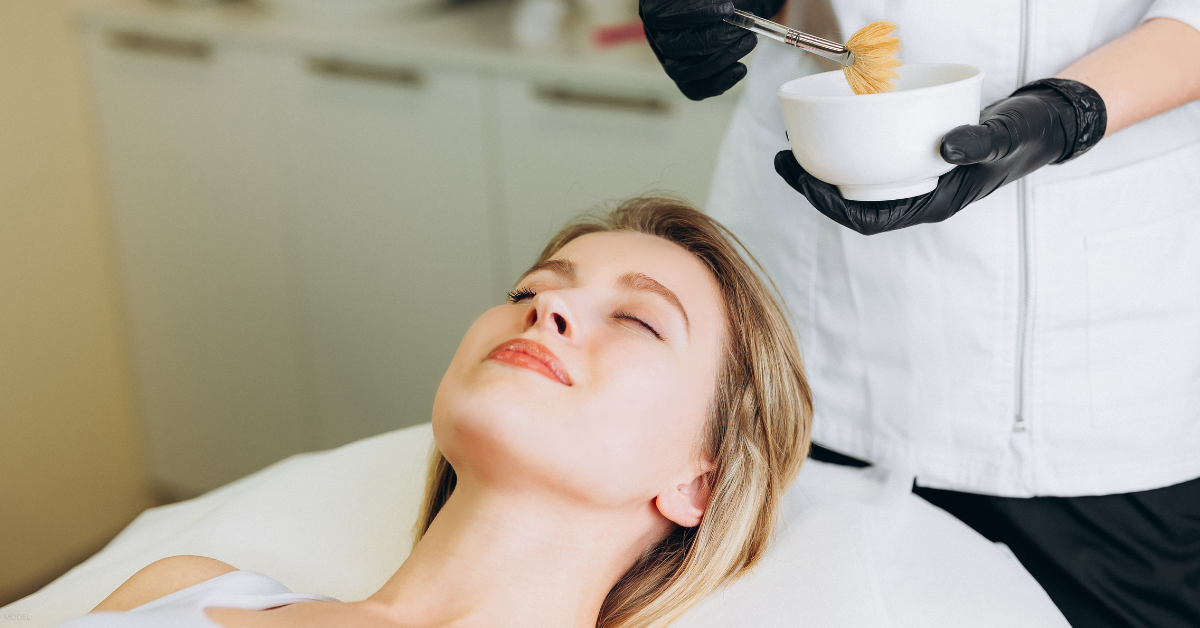
Meet the Obagi Blue Peel, the only peel that makes feeling blue about your skin a good thing. This powerful chemical peel is a favorite with our patients (and across the U.S.) thanks to its long list of benefits and stunning results.
Patricia “Trish” Sgobba is an esthetician who specializes in chemical peels at Destin Plastic Surgery’s Anti Aging Skincare Clinic. In this blog post, she shares her expertise, answers a few questions about the peel, and shows an Obagi Blue Peel patient before and day by day after treatment. Keep reading to learn more about the peel that’s so effective it has clients raving about it until they’re blue in the face.
What Is the Obagi Blue Peel?
The Blue Peel is an FDA-approved, medium-depth chemical peel that uses trichloroacetic acid (TCA) to remove layers of damaged skin cells and reveal a fresh, healthy layer underneath.
What Are the Biggest Benefits of the Obagi Blue Peel?
The Blue Peel offers a host of skin benefits, but the main ones include:
- Reduction of hyperpigmentation (brown spots)
- Improvement of PIH (post-inflammatory hyperpigmentation, which is a form of acne scarring)
- Improvement of texture with fine lines and the appearance of pores
Studies have shown many people also enjoy skin tightening and reduction of skin laxity due to increased collagen production.
The peel isn’t a one-size-fits-all treatment. Your esthetician will customize it to suit your individual needs and goals.
How Does the Blue Peel Compare to Other Chemical Peels?
For starters, there are the peel’s undeniable results. Trish said a single Blue Peel can achieve what it would take multiple treatments of a lighter peel to accomplish, making it one of her favorites both to perform and have done.
Then, there’s its most distinctive feature: its beautiful blue hue.

“The signature blue color is very unique to this peel,” Trish said. “The blue dye slows down the rate that the acid is absorbed into the skin, resulting in a more even peel. It also acts as a guide for the esthetician, again resulting in more even results.”
Your esthetician will give you an at-home cleanser to wash off all that blue when you’re finished, but it’s normal to have a slight tint for the first few days following your peel.
What Does It Feel Like to Get an Obagi Blue Peel?
“It is an uncomfortable peel to have applied as it is a deeper peel than the others we offer, but that is what provides the better results,” Trish said. “I really want to be there for my clients to reassure and make them feel as comfortable as possible through the process.”
While there is some discomfort involved, you can rest assured that it won’t last long at all.
“I love that once the peel has been applied, the client is able to leave the office in no pain or discomfort. Not all peels work that way. Some can continue to burn and feel uncomfortable long after you leave the office, but all my clients are fine when they leave.”
What Is the Blue Peel Recovery Process Like?
Other than the blue tint, here’s what you can expect during your Blue Peel recovery: some peeling to start on day 3 around the mouth area and then peeling progresses upward and outward. This typically lasts 9 or 10 days, though it may take up to 14.
“It is so important that people do not pick or pull at the loose skin as this can result in infection and scarring,” Trish said. “It is very important our clients allow themselves the time to heal.”
A few recovery tips:
1. Do not apply makeup during the healing process.
2. Avoid direct sun exposure while your skin heals.
3. Stay away from activities that involve excessive heat and sweating until the peeling is complete.

Trish checks in with all her peel clients via phone and email throughout the process to answer any questions and make sure they’re following their homecare guidelines.
The good news? Most people only need to go through the whole process once a year to enjoy radiant skin for months at a time.
Can I Include a Blue Peel as Part of a Facial Plastic Surgery Procedure?
You sure can—Trish calls it the “icing on the cake.”
“I love that I have the ability to apply this peel in surgery with my clients that are undergoing other procedures with Dr. Burden,” she said. “I administer the peel while they are still sedated so they have no discomfort during the application process.”
Who Should Not Get an Obagi Blue Peel?
According to Trish, you may not be a candidate if you have:
- Active acne
- Very sensitive skin
- Skin that is prone to hyperpigmentation such as melasma
- A darker skin tone that has not pretreated their skin with the appropriate skin care products prior to the peel
- Active inflammatory skin conditions such as lupus, rosacea, or active viral infections such as herpes simplex.
This peel also isn’t appropriate for anyone who is pregnant or nursing. And if you’re someone who just can’t resist picking at your skin while it heals, you may want to pass! Instead, a HydraFacial® may be a better option for many of you who are not suited to a Blue Peel.
Where Do I Start?
If you’re new to the Blue Peel, Trish recommends starting with a no-pressure consultation.
“With most of my new clients that are considering a blue peel, I definitely like to do a consultation in the weeks leading up to the peel to make sure they are a suitable candidate and also discuss medication options that can be taken prior to the procedure if needed, and explain everything they need to know before the day of the peel,” she said.
“There is a trust factor you have to build with your client when they are doing a peel like this, and I feel that is a very important part.”
To get in touch with Trish about reviving your skin with a chemical peel in Destin, FL, contact us online or give us a call at (850) 654-1194.

Leave a Reply